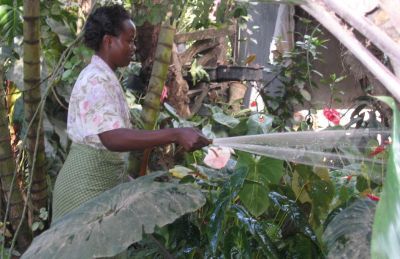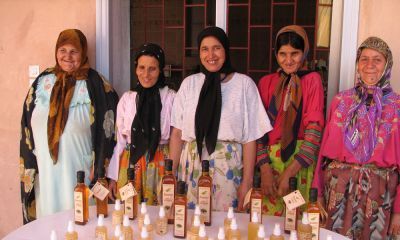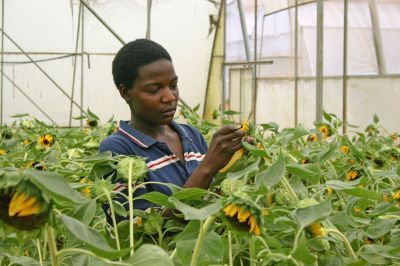Ivy Newton-Gamble's Blog: Everyday African Food, page 17
June 2, 2009
The Seychelles is made up of more than 100 tiny islands
[image error]
The Seychelles is made up of more than 100 tiny islands that dot the face of the endless deep. Millions of years ago, these islands were stranded in the western Indian Ocean after Africa and Asia drifted apart. Wherever you come from, Seychelles will be far away from home. And this is indeed a key attraction for many who want to get away. It lies northeast of Madagascar, and is 1,593 Km east of the African coast at Kenya.
The Arabs are thought to have been amongst the earliest visitors, having co
May 31, 2009
The Maasai
[image error]
The Maasai are East Africa’s most celebrated indigenous peoples. Tall, dark and slender, they have for long remained contemptuous of modern lifestyle. They are a noble, proud, and freedom loving people, who have always infatuated romantic esterners, since the appearance of explorer Joseph Thomson’s book “Through Maasailand” in 1885. Their interpreters to the world have included such gifted writers as Karen Blixen and Ernest Hemingway.
The Maasai are a pastoral tribes-group native to southern Keny
May 28, 2009
Mount Kilimanjaro

Climbing Mount Kilimanjaro is probably the ultimate climbing holiday in Africa! As well as being the ‘Roof of Africa’, Africa’s highest mountain, Mt Kilimanjaro is also the world’s premier free standing volcano. At 5895m Uhuru Peak towers over vast African plains. The different culture and wildlife Tanzania has to offer complement the unsurpassed natural beauty you will see all over the mountain. Kilimanjaro National Park consists of the entire Tanzanian part of the iconic mountain, above the 27
May 27, 2009
Moroccan Tajines

Morocco is located in Northern Africa, bordering the North Atlantic Ocean and the Mediterranean Sea, between Algeria and Western Sahara. Morocco is slightly larger than California. The climate is Mediterranean, becoming more extreme in the interior with northern coast and interior are mountainous with large areas of bordering plateaus, intermontane valleys, and rich coastal plains. Moroccans have a diverse language just like many African counties, the offical language is Arabic, then there are B
May 21, 2009
Hibiscus Flower Beer
[image error]
Chad’s capital city N’Djamena. Chad is slightly more than three times the size of California. Chad is a particular country of interest, officially known as the Republic of Chad it’s a landlocked country in central Africa. It has a total population exceeding 10 million people and the languages are French (official), Arabic (official), Sara (in south), more than 120 different languages and dialects.
N’Djamena is populated with embassies and colonial houses which show evidence of European influence
May 20, 2009
Tribes of Tanzania
[image error]
Author: Robert Palmer Photo: USAID
Tanzania is a country in Africa bordered by Kenya and Uganda on the north, Rwanda, Burundi and the Democratic Republic of the Congo on the west, and Zambia, Malawi and Mozambique on the south. To the east it borders the Indian Ocean.
The country’s name came after the united of Tanganyika, the large mainland territory, and Zanzibar the offshore archipelago, British colonies united in 1964, forming the United Republic of Tanganyika and Zanzibar, which later the sa
May 19, 2009
African Food Today
[image error]Today, African food is the most diverse cuisine on the planet, a true “melting pot” of foods and flavors. Africa’s history is rich and so is its cuisine. With influences from so many other countries, Dutch, English, Asian, and Indian, Africa’s new cuisine is the newest global food trend.
The Mediterranean has a place in African foods with its influence of olive oil, olives, and pasta. Rich African stews are infused with elements from both the East and the West. Using little meat, but an abundance
May 18, 2009
Ugandan Drinks

Ugandan Drinks
Author: Twino Photo: USAID
When it comes to beverages, Uganda has it all. Both alcoholic and non alcoholic beverages are found in Uganda. For those who would like to taste Uganda’s beer, Uganda breweries in Kampala and Nile breweries at the source of the Nile, will make your day with their beer varieties. For those who are not allowed to take alcoholic drinks Uganda caters for you too. Coca-Cola and Pepsi cola factories are the top of non alcoholic makers of those dinks. But other
May 17, 2009
The Zinza, Manda, Yao tribes
[image error]
Author: Robert Palmer Photo: T. Brunette
Much of Zanzibar’s population came from the mainland, one group known as Shirazis follows its origins to the island’s early Persian settlers. Non-Africans residing on the mainland and Zanzibar account for 1% of the total population. The Asian community, including Hindus, Sikhs, Shi’a and Sunni Parsis and Goans, has declined by 50% in the past decade to 50,000 on the mainland and 4,000 on Zanzibar. An estimated 70,000 Arabs and 10,000 Europeans .
Generally,
May 15, 2009
Coffee Of The World
Different Regions, Different Styles, Different Tastes[image error]
Author: ntjones Photo:G. LaRue
With so many wide and varied coffee producing regions throughout the world it is hard to know what to expect when you buy a coffee from these places. Some of regions rely on small independent farmers to produce the coffee other regions are run by the multinational companies. We are well aware of how famous Java is in the world of coffee, it has now become a second name for coffee. But there a many less well known
Everyday African Food
- Ivy Newton-Gamble's profile
- 17 followers



